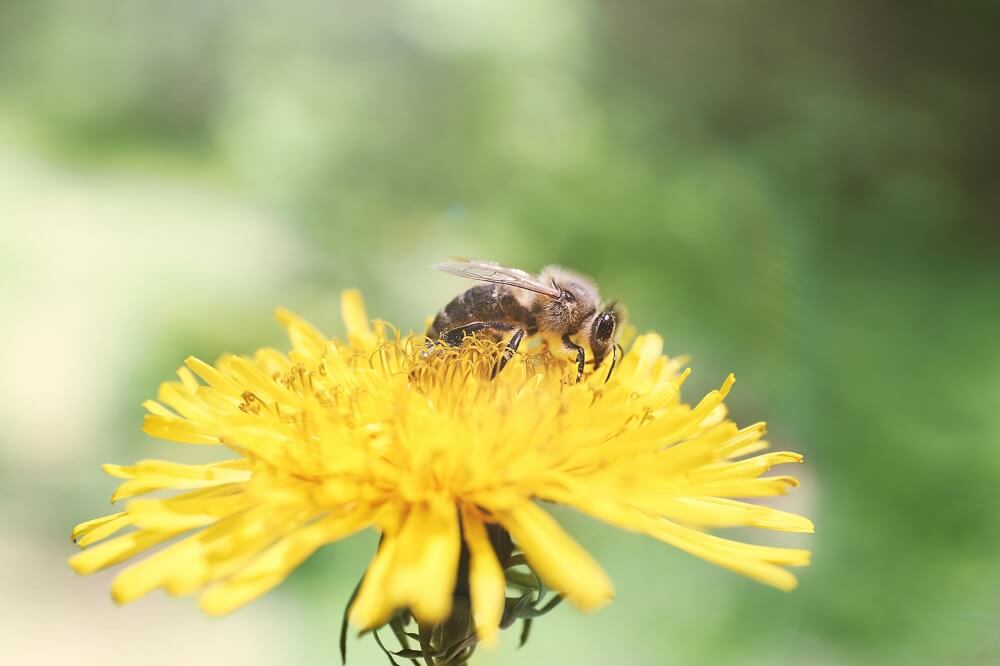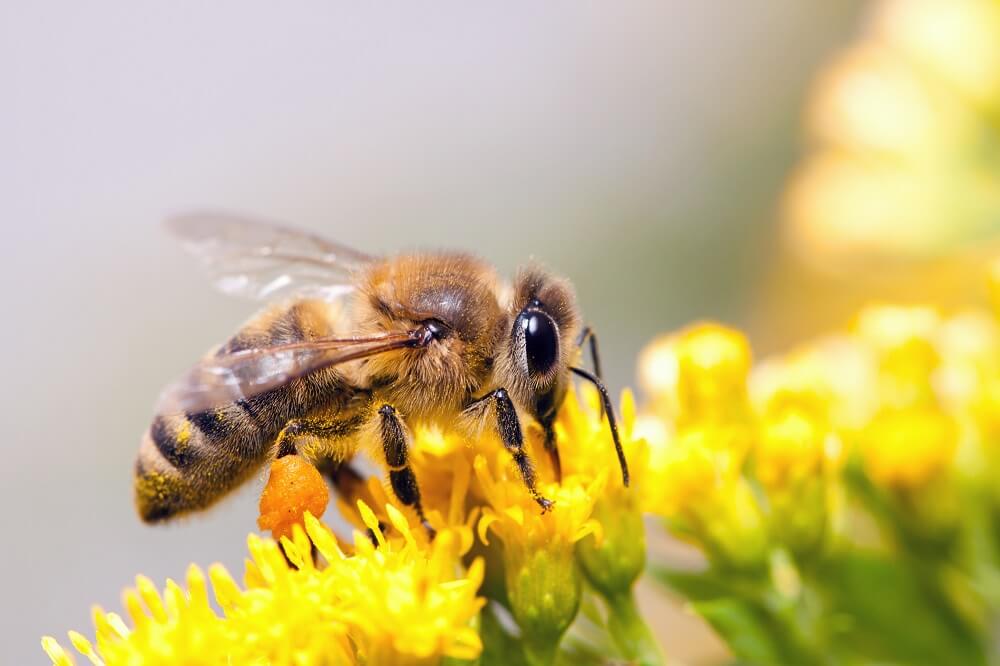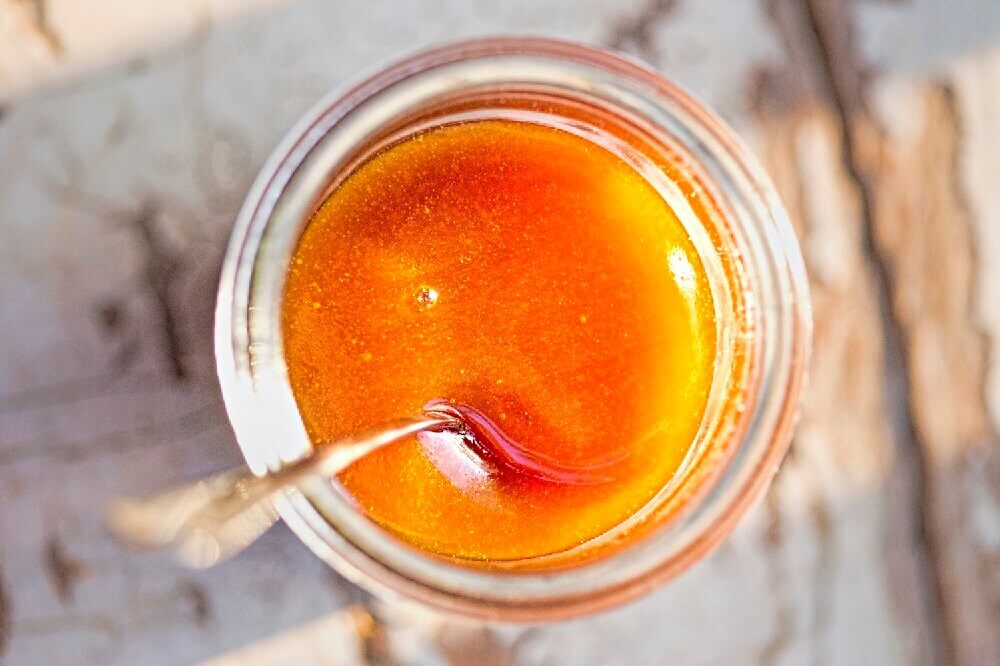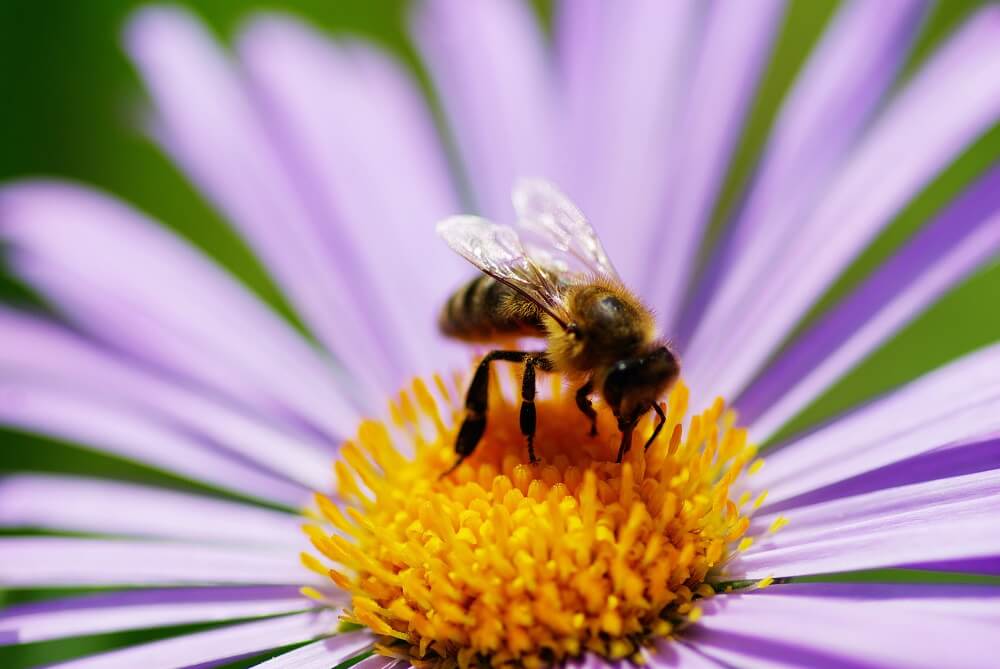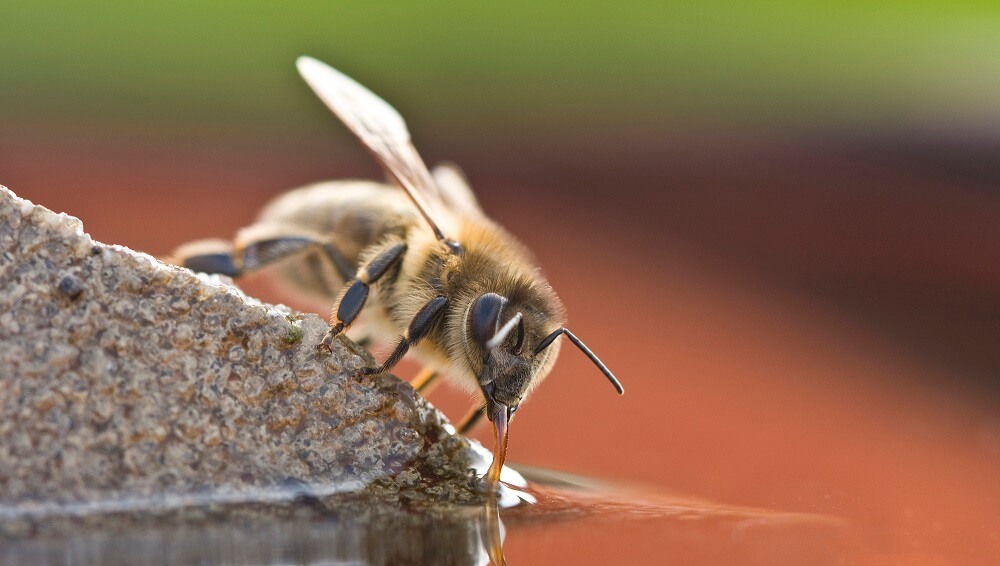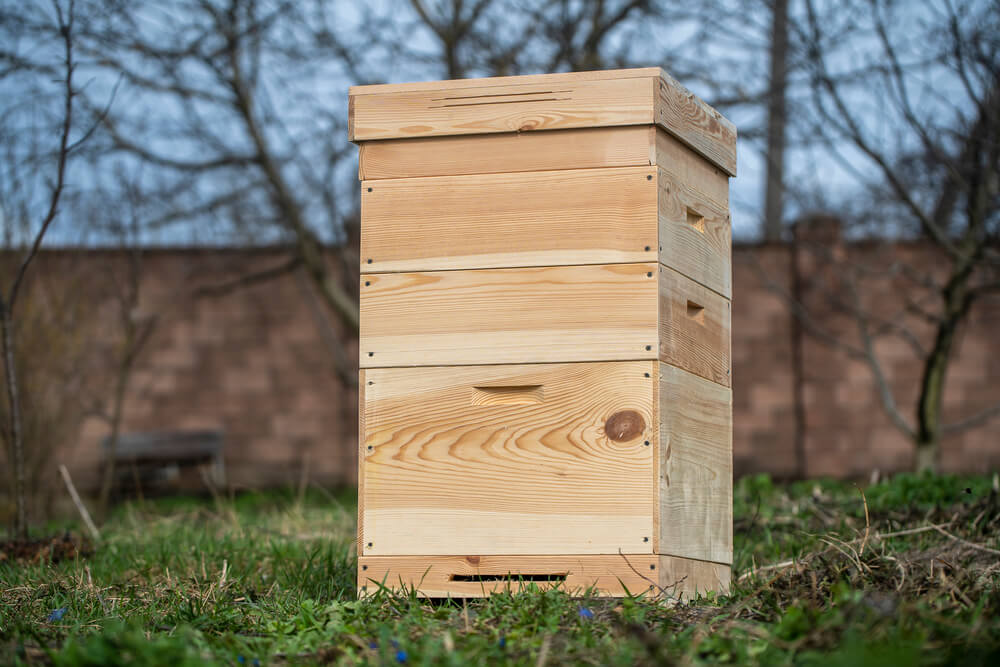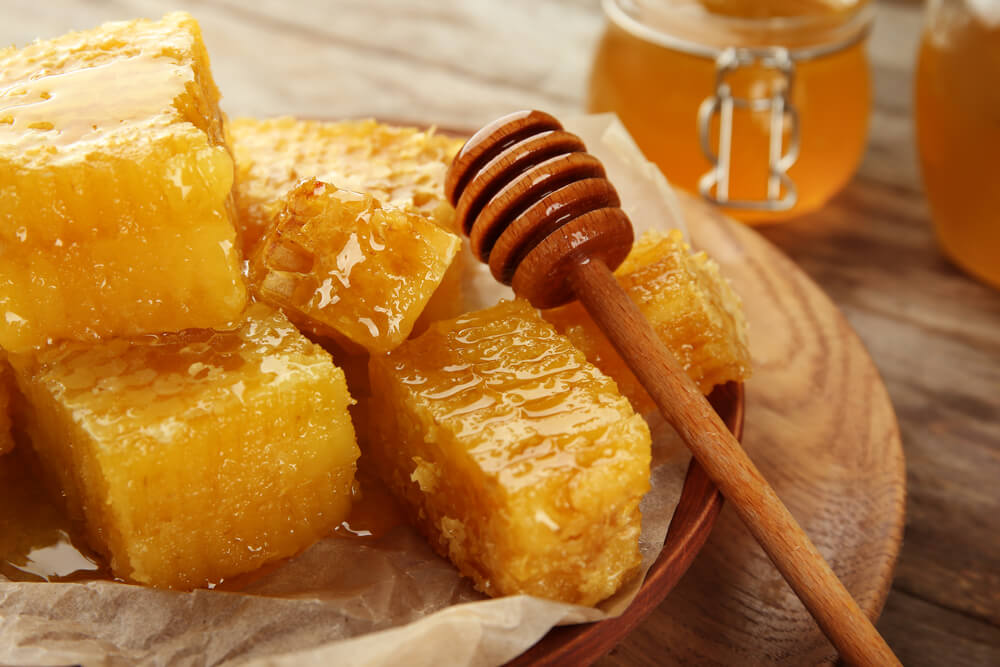Table of Contents:
How to Decrystallize Honey
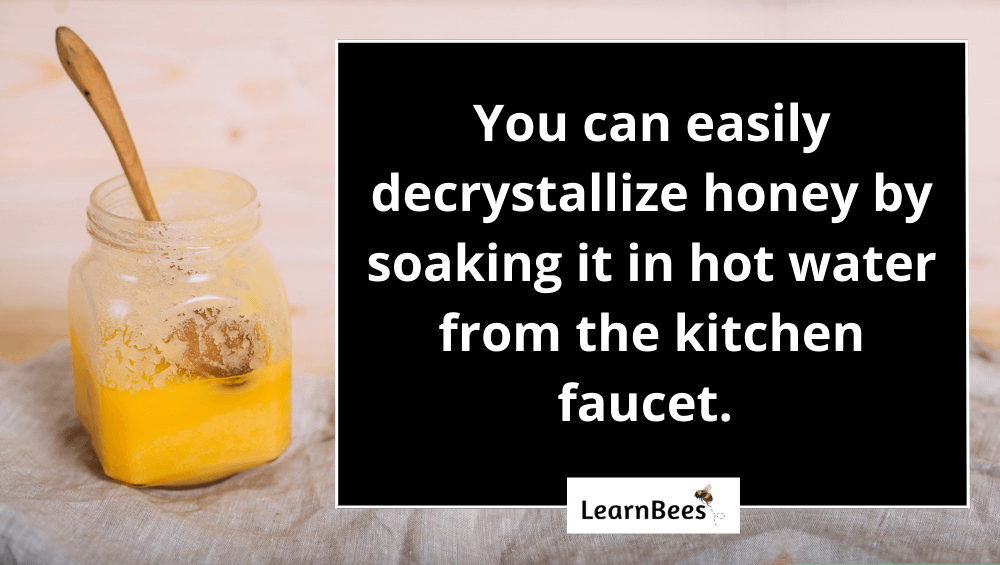
The easiest way to decrystallize your honey is to give it a hot water bath. But while this is an easy step, you may have to repeat it a few times to make sure your honey is completely liquified.
Here’s what you do:
Step 1: Fill a Bowl Full of Hot Water
I should issue a disclaimer first:
You don’t want to overheat your honey.
Why?
Because overheating your honey will cause it to lose its enzymes, antioxidants, and other nutrients.(1, 2, 3)
So you might be tempted to stick your honey bottle into boiling water, but I don’t recommend it. Water boils at 212°F (100°C), and there are a few reasons to avoid this:
- Plastic bottles exposed to high heat can release unhealthy chemicals into your honey(4)
- Overheating your honey can strip it of its nutrients(5, 6, 7)
- Plastic bottles exposed to high heat can become melted or misshapen
Thankfully, the hot water from your kitchen faucet will do the trick. Most home water heaters are set between 120-140°F (48-60°C), so they won’t harm your honey.(8)
Step 2: Soak Your Honey Container in the Hot Water
Make sure the lid is tight so that water doesn’t get into your honey. Also, submerge your honey jar in the hot water so that all of it is heated.
And then?
Leave your honey in the water until the water starts to cool – usually about 15 minutes.
Step 3: Stir Your Honey & Repeat
The key here is patience.
You might have to do several repetitions of this because your water will cool, and you’ll need to replace it with new hot water.
But here’s my best tip:
After soaking your honey in the hot water, stir it with a butter knife or spoon to help break up the honey crystals. Then, refill your bowl with new hot water and let it soak again for 15 minutes.
So the process goes like this:
- Soak honey for 15 minutes
- Stir honey
- Soak honey in new hot water again for 15 minutes
- Stir honey
Repeat this process as many times as necessary.
Note:
You can decrystallize honey in the microwave, but it may overheat the honey and therefore strip it of its nutritional benefits.
Why Does Honey Crystallize?
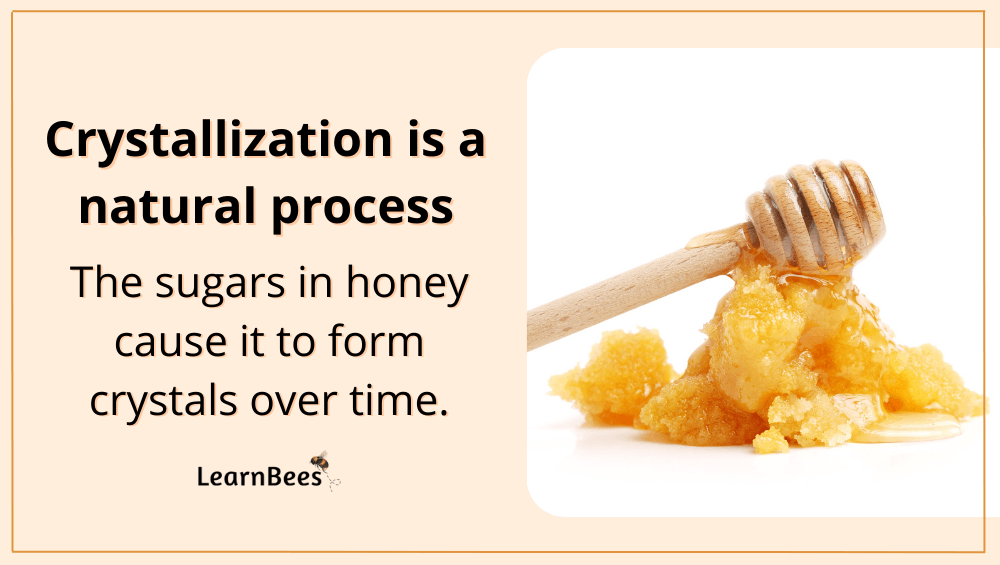
All raw honey naturally crystallizes over time.
Why?
Because honey is made up of two natural sugars: glucose and fructose.(9)
Sugars are hygroscopic, meaning they contain very little water in their natural state. So these sugars begin to form little crystals over time because there isn’t enough water to keep them dissolved.(10)
But here’s the thing:
Some types of honey crystallize slower than others.
For example, tupelo honey is known for its incredibly slow crystallization rate. In contrast, clover honey crystallizes much faster. This is because clover honey has higher levels of glucose than tupelo honey.
As a result, higher glucose levels encourage the honey to separate and form crystals faster.
But don’t worry.
Crystallization is a normal process, and it doesn’t mean your honey has gone bad.
In fact, it’s quite the opposite actually.
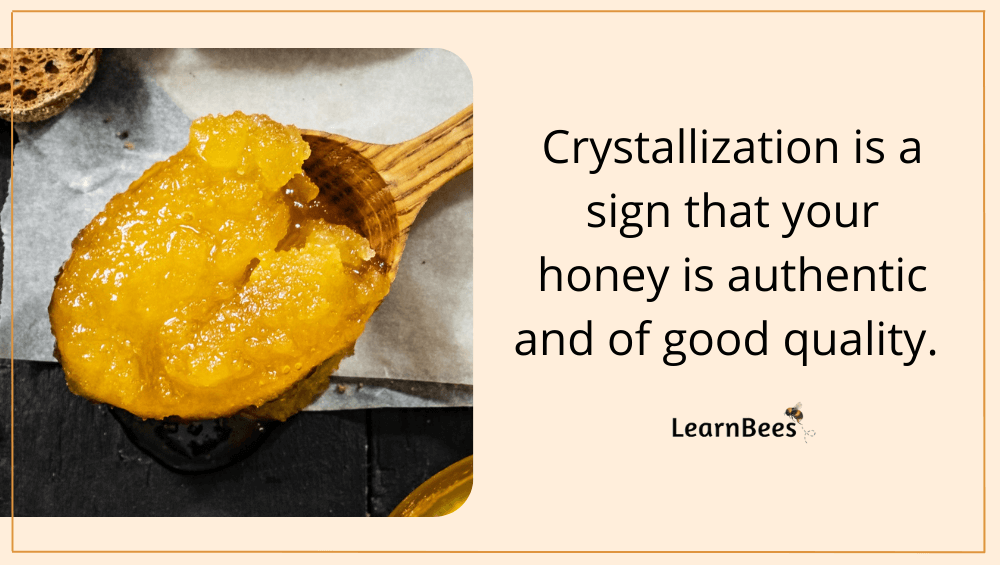
When your honey has crystallized, it’s a sign that it’s good quality honey. Overly processed honey won’t crystallize like natural honey does. This is because manufacturers often mix honey with other sweeteners such as sugar or high fructose corn syrup.
As a result?
It’s not considered real honey anymore. Real honey should be raw and unfiltered, so it maintains all the antioxidants and enzymes that make honey a superfood.
To take it a step further:
The FDA warns that any honey mixed with sweeteners should no longer be labeled honey.(11)
So when shopping for honey, you want to check the labels to make sure the honey is listed as raw honey. Raw honey has a delicious flavor that tastes better than the processed honey in plastic teddy bear jars. It’s also full of science-backed health benefits.
Can you Prevent Honey From Crystallizing?
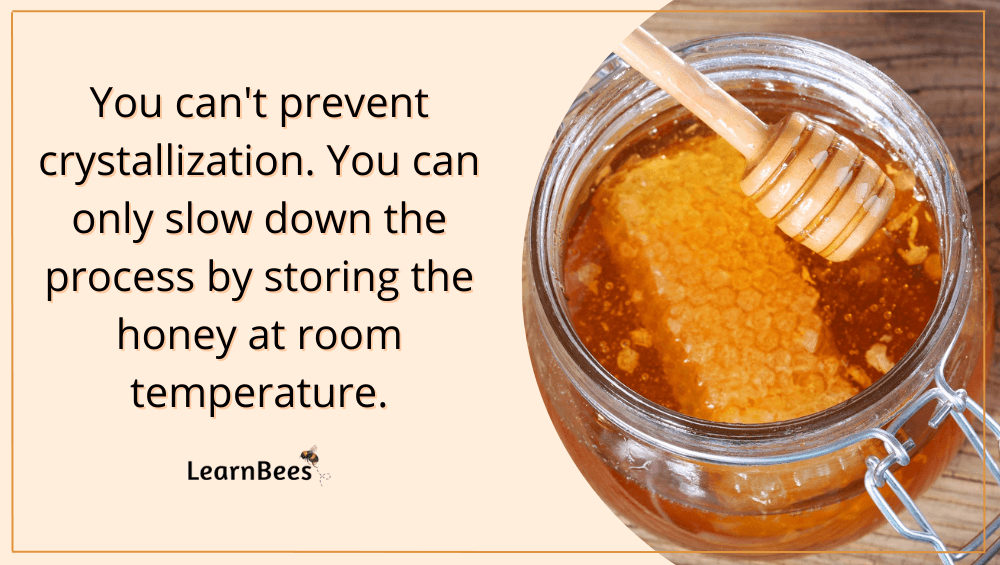
You can’t prevent raw honey from crystallizing.
As mentioned, the crystallization process is completely natural and happens over time. After all, crystallized honey is still honey, it’s just honey in solid form.
But, you can slow down the process.
The first thing you should know is that crystallization happens faster at low temperatures. For example, the hardening process accelerates when the honey temperature dips below 50°F (10°C).
So what does this mean for you?
It means don’t store your honey in the refrigerator or freezer. It’s best to keep your honey at room temperature. That is, of course, unless you prefer crystallized honey.
FAQs on How to Decrystallize Honey
- How many times can you decrystallize honey?
- Can you permanently decrystallize honey?
- Does heating honey ruin it?
- What temperature to decrystallize honey?
- Can you decrystallize honey in the sun?
- How do I decrystallize honeycomb?
- Is crystallized honey bad?
- How long does it take for honey to crystallize?
- Why does some honey not crystallize?
- Does honey solidify in the fridge?
- Are there extra ways to decrystallize honey?
How many times can you decrystallize honey?
Technically, you can decrystallize honey over and over again. But, each time you heat the honey – even at low temps – you’ll potentially cause the honey to lose some of its nutrients.(12, 13, 14)
So my opinion?
If you find yourself having to decrystallize the same jar of honey repeatedly, try this:
Option 1: Only decrystallize small amounts at a time. For example, only heat the amount that you plan to eat in one or two sittings.
Option 2: Use up your honey before it starts to crystallize. Honey can be paired with many types of food. I love adding my honey to coffee and toast, for example.
—> Go back to the FAQs on “How to Decrystallize Honey”
More to Explore:
Can you permanently decrystallize honey?
No. But, people often ask, “How do you fix honey that’s crystallized?”
The answer is that you can fix honey temporarily, but it’ll eventually crystallize again if you don’t finish the honey in time.
Honey naturally crystallizes over time because it’s high in sugar.(15)
But don’t worry. Crystallized honey is still honey. It’s just honey in solid form
—> Go back to the FAQs on “How to Decrystallize Honey”
More to Explore:
Does heating honey ruin it?
Good question.
Heating honey won’t affect the taste, but it can cause the honey to lose its nutrients.(16, 17, 18)
That’s why it’s best to take a slow and steady approach to decrystallizing your honey.
But I get it.
It’s tempting to stick your crystallized honey in boiling water to get it to melt fast. But, water boils at 212°F (100°C), and there are a couple of reasons to avoid this:
- Soaking plastic bottles in boiling water can release unhealthy chemicals into your honey(19)
- Overheating your honey can cause it to lose its minerals and antioxidants(20, 21, 22)
- Plastic bottles exposed to high heat can melt or become misshapen
So my suggestion?
Decrystallize your honey using a hot water bath as we suggested earlier. That method works whether you’re trying to learn how to decrystallize honey in a plastic bottle or how to decrystallize honey in a glass jar.
Win-win.
—> Go back to the FAQs on “How to Decrystallize Honey”
More to Explore:
What temperature to decrystallize honey?
A good temperature to shoot for is around 120-140°F (48-60°C) if you have a thermometer.
If you don’t have a thermometer, you can just use hot water from your kitchen faucet. Make sure it’s not too hot that you can’t dip your finger in it.
—> Go back to the FAQs on “How to Decrystallize Honey”
More to Explore:
- Acacia Honey: The Taste, Health Benefits, & Risks
- What is Sage Honey?
- Do Honey Pasteurization Ruin Honey?
Can you decrystallize honey in the sun?
Yes, you can stick your honey in a sunny window or outside.
This works especially well on a hot summer day and it’s one of the easiest ways to learn how to make honey liquid again. Just make sure you don’t forget about it!
You’ll also need to check on your honey regularly to stir it and break up the crystals.
—> Go back to the FAQs on “How to Decrystallize Honey”
More to Explore:
How to decrystallize honeycomb?
People often ask numerous questions like:
How do you decrystallize honey in a plastic bottle? Is there a way to turn crystallized honey back to liquid honey? Can I decrystallize honey in the microwave? How to decrystallize honey in plastic? How to decrystallize honey fast? How to decrystallize honey in microwave? How to decrystallize honey in the oven? Can you decrystallize honey in the microwave?
You can decrystallize honey in the microwave, but be warned that it may overheat the honey which can cause it to lose its nutritional value.
I don’t recommend decrystallizing honey in the oven unless you don’t have access to hot water.
—> Go back to the FAQs on “How to Decrystallize Honey”
More to Explore:
- The Top 3 Best Manuka Honey Brands
- Orange Blossom Honey: Uses, Benefits, & Risks
- Sourwood Honey: Uses, Benefits, & Risks
Is crystallized honey bad?
Not at all!
Crystallized honey is still honey. It’s just honey in solid form.
And guess what?
Honey naturally crystallizes over time. So you don’t have to worry about crystallized honey “going bad.” In fact, when stored correctly, honey is the only food that never expires.(23, 24)
This means you can pass a jar of honey down five generations or more if you want to.
In summary?
Don’t worry, crystallized honey is still perfectly good. That’s why “How do you fix crystallized honey?” and “How do you get honey back to liquid?” are common questions we get.
It happens, but it’s easily fixable.
—> Go back to the FAQs on “How to Decrystallize Honey”
More to Explore:
How long does it take for honey to crystallize?
It depends.
Honey crystallizes faster in colder temperatures. More specifically, when the honey’s temperature dips below 50°F (10°C), the crystallization process starts to accelerate.
So if you stick your honey in the fridge, for example, it can take anywhere from 12-48 hours.
If you have your honey stored in a cool, dark cabinet, it can take a few months or longer to crystallize.
—> Go back to the FAQs on “How to Decrystallize Honey”
More to Explore:
- The Brutally Honest Truth About Sour Honey
- Buckwheat Honey: Uses, Benefits, & Risks
- Can You Eat Honeycombs?
Why does some honey not crystallize?
This answer can get a little scientific, so I’ll try to keep it simple.
Basically, honey is made up of two sugars: glucose and fructose.(25)
It’s the glucose that crystallizes, so honey with lower glucose levels won’t crystallize as fast. For example, sourwood honey falls into this category.
On the other hand, honey with higher glucose levels – like orange blossom honey – will crystallize much faster.
That said, there are more than 300 types of honey, including:
- Manuka honey
- Clover honey
- Tupelo honey
Honey ranges in color from dark honey to light honey. And because of their glucose levels, different types of honey crystallizes at different rates.
But there’s also another reason.
Highly processed honey won’t crystallize because it’s technically fake honey.
What do I mean by that?
Well, there are two common types of honey:
- Raw and unfiltered honey (which is honey just as it exists in the beehive)
- Ultra-filtered honey (that’s technically considered fake honey)
According to the FDA, honey that’s been ultra-filtered and no longer contains pollen is no longer considered real honey.(26)
So fake honey (aka ultra-filtered) won’t crystallize because all the good stuff has been filtered out during the pasteurization process. It also comes with unnecessary additives like high fructose corn syrup.
—> Go back to the FAQs on “How to Decrystallize Honey”
More to Explore:
Does honey solidify in the fridge?
Yes. Honey starts crystallizing (aka solidifying) fast once its temperature goes below 50°F (10°C).
Refrigerator temperatures are usually at or below 40°F (4°C).(27)
So here’s the deal:
There is no need to store your honey in the fridge. The best place to store it is in a dry place at room temperature.
Of course, if you’d prefer your honey to crystallize, then you can speed up the process by sticking it in the fridge. Honey in the refrigerator will typically crystallize in less than 48 hours.
But don’t worry, your honey is still perfectly fine to eat even if it’s in solid form. And you can learn how to decrystallize raw honey by following the steps above.
—> Go back to the FAQs on “How to Decrystallize Honey”
More to Explore:
Are there extra ways to decrystallize honey?
Option 1: How to Decrystallize Honey on the Stove
Start by heating a few inches of water in a pot on the stove. I recommend getting the water between 120-140°F (48-60°C), so you don’t risk overheating your honey and causing it to lose its nutrients.(28, 29, 30)
Next, remove your pot from the heat and place your honey jar in the water.
Once the water starts to cool, open the honey jar and stir it with a spoon or butter knife to help break up the crystals. Repeat the process until your honey is completely decrystallized.
Option 2: How to Decrystallize Honey in a Slow Cooker
Most slow cookers have three settings:(31)
- Keep warm
- Low
- High
The “keep warm” setting is a good option for decrystallizing your honey.
Start by filling your slow cooker with water and selecting the “keep warm” or “low” setting. Place your honey jar in the uncovered slow cooker.
Depending on how much honey you have, decrystallizing it can take anywhere from 30 minutes to three or four hours.
But here’s the key:
If you go this route, make sure to check on your honey regularly in 30-minute intervals. This way you won’t leave the honey in the hot water any longer than it needs to be.
